On the first day of 2018, I saw a dead stinkbug in my driveway and thought, “Wouldn’t it be neat if I took photos of every insect, spider, etc. I saw in the yard this year?” In 2019, I started looking more closely at my plants as well. I got curious about our weeds- should I pull them or let them grow? And what about the other animals in my yard? After all, insects are but one strand in the backyard food web.
I’ve started my third year of Backyard Blogging with a kind of spring-like January. When we returned to north Florida from winter break on January 4, we were greeted with a seasonally appropriate sight:
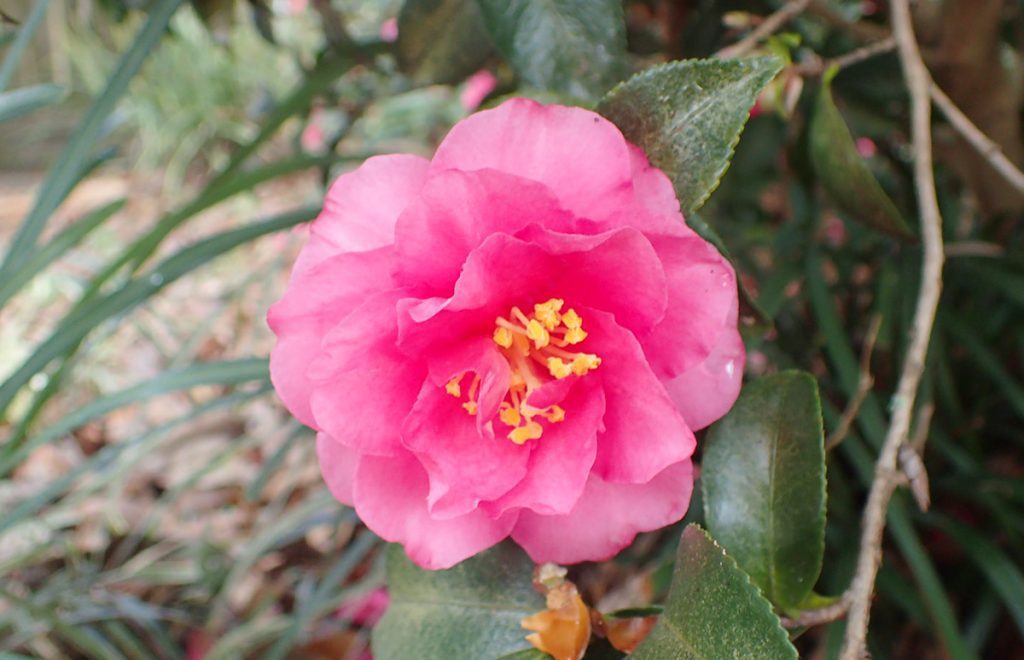
So far, this was looking like any other year in our yard. But then I went to the back yard:
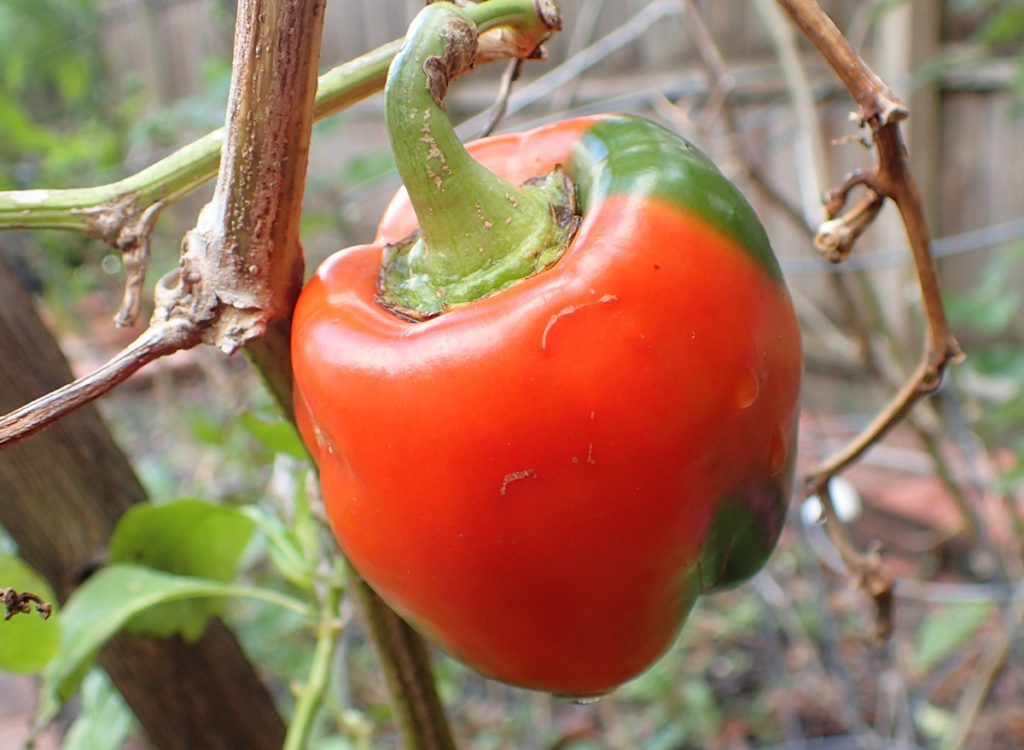
The pepper plants barely survived an almost seven week drought which went into the early fall. The leaves were green, but very much dry and drooping, despite daily watering. The day after it finally did rain, on October 14, I was surprised to see these and many other deadish plants perk back up. Even more surprisingly, the peppers started to flower soon after, right about when I should have been planting winter crops in their place. Anyhow, that’s my first ever January red pepper.
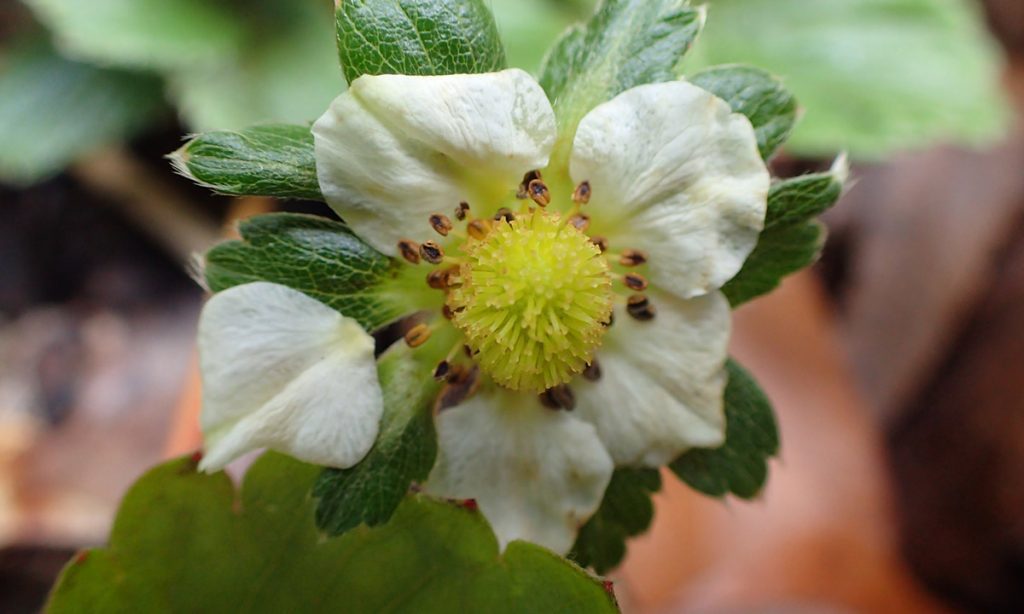
Strawberries more commonly flower this time of year, but I always enjoy seeing the few flowers I do get. The two plants I have now are several years old, and have never been productive.
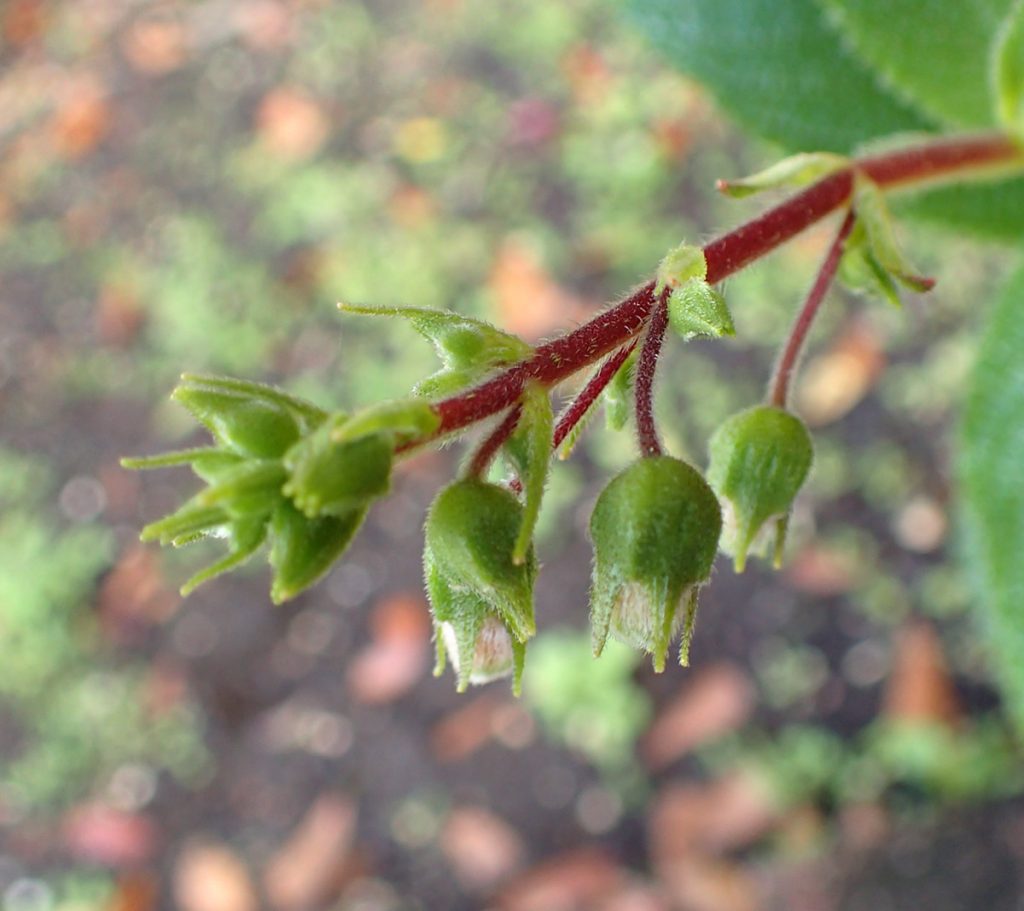
This is a plant that has died back to its roots the last couple of winters. This year, we have new flower growth in the “dead of winter.” So, we have some plants acting unseasonably. But, as we see below, some animals are confused about the time of year as well.
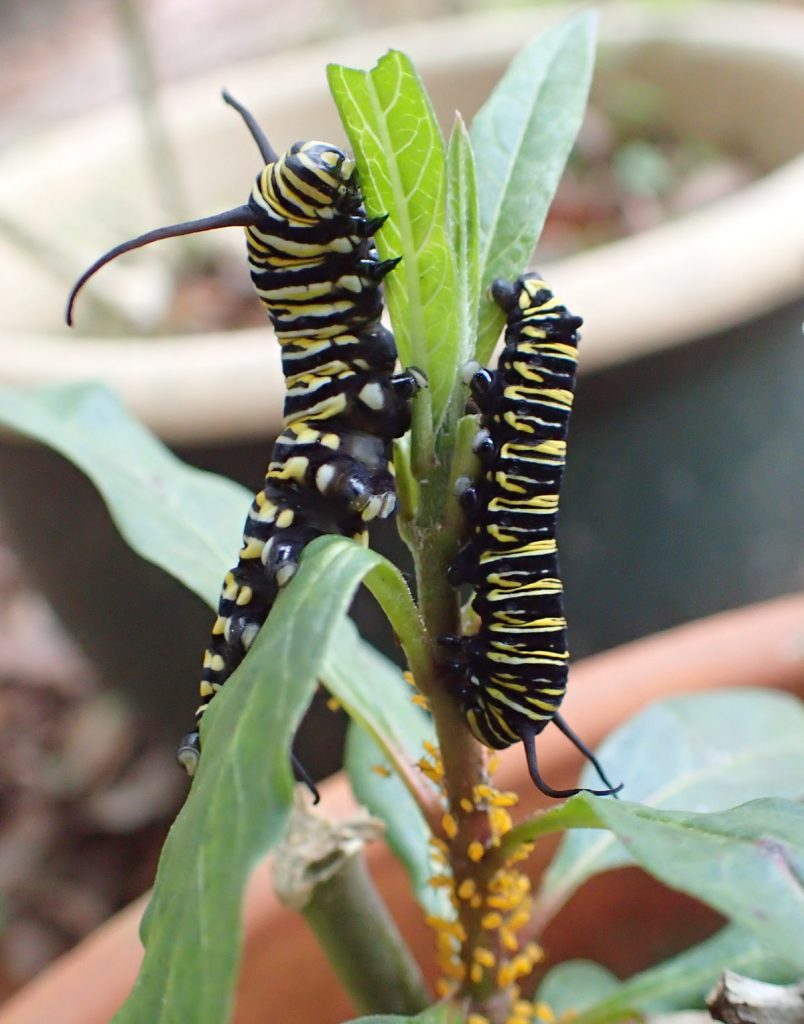
Winter Monarchs and the Peril of OE
I debated whether or not I wanted to write about this, but it’s instructive to see what happens to monarch caterpillars who happen to be born in the winter.
I had originally wanted to trash my tropical milkweed plants in 2019, but decided that all of the money I didn’t spend on milkweed, I could send on other plants for the garden. And we do have a few aquatic and pink swamp milkweed plants in the mix. Still, most of our milkweed is the nonnative Asclepias currassavica.
The thing with tropical milkweed is, you have to start cutting it back after Thanksgiving. There are two reasons for this. One is that most native milkweed species lose their leaves in the winter. And so, the theory goes, having a larval food source in the off-months encourages monarchs to stay in Florida rather than migrate to their wintering grounds in Mexico. St. Marks Refuge milkweed guru Scott Davis doesn’t entirely buy this, as he discussed during an interview for our milkweed raising piece last year. He points out that native aquatic milkweed doesn’t die back either, except of course when we have freeze events (which also kill tropical milkweed).
Monarch Migration Disrupted
Having monarchs in our area year round is a disruption of their natural cycles. Monarchs stop breeding when they reach the northern end of their migration in late summer/ early fall, in the northern US or southern Canada. Those butterflies won’t breed again until they leave Mexico the following spring. So there shouldn’t be caterpillars at all during the winter months. But increasingly there are, and there are consequences for these animals as a result.
According to the Monarch Joint Venture, 49% of winter monarchs caterpillars contract the deadly protozoan parasite known as Ophryocystis elektroscirrha (OE for short). It can build up on milkweed leaves over time, which is why it’s beneficial for the leaves to fall off in colder months.
Anyhow, we were out of town a lot starting on Thanksgiving and going through the New Year. So I didn’t do a great job of keeping the tropical milkweed down to six inches. Here’s what happened.
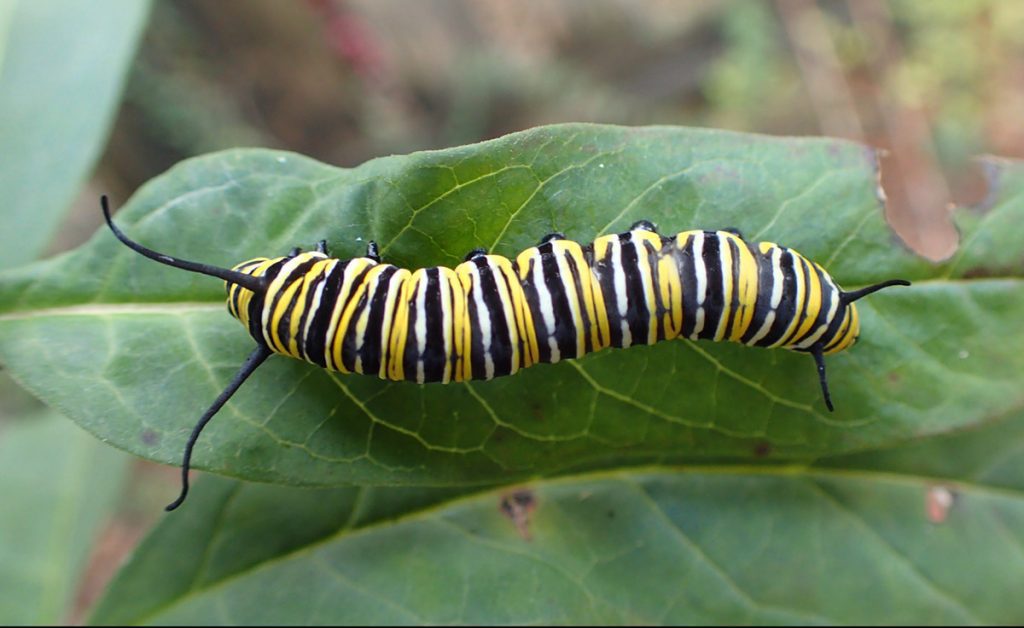
A Less Than Optimal Chance of Survival
We had three large caterpillars when we got back to Tallahassee after winter break. It took a couple of weeks for them to make chrysalides, perhaps because, even though it was warm for a January, it was still cooler than when monarchs usually breed. In the summer, they can take less than two weeks to get from newly hatched to chrysalis, which is faster than what’s listed in the literature (I get a lot of information from the University of Minnesota Monarch Lab’s page).
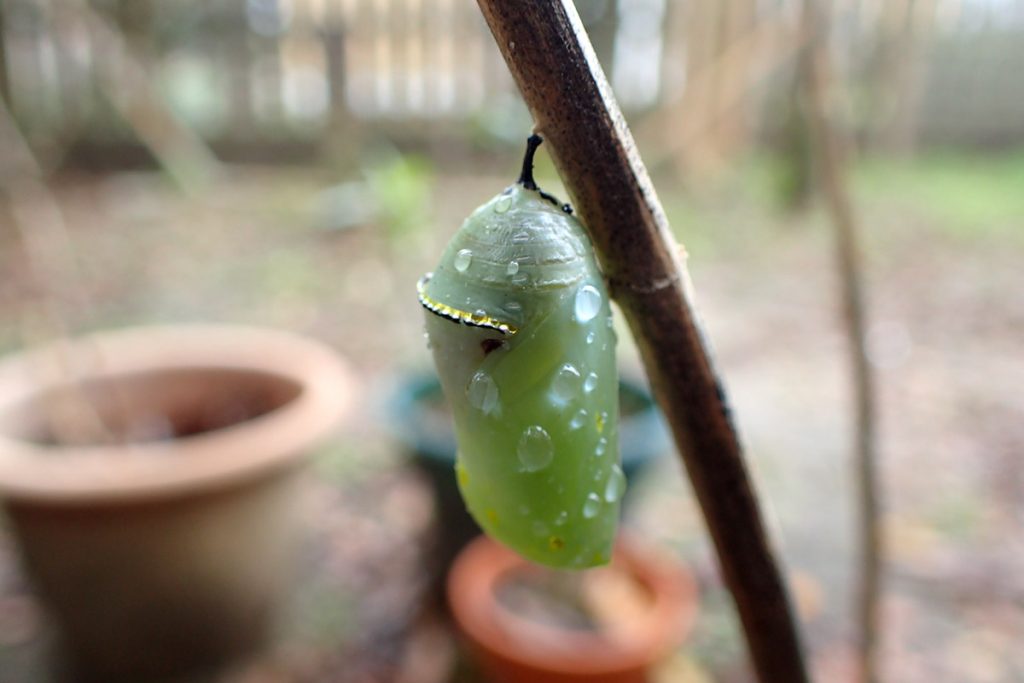
The day they made their chrysalides, the forecast showed near freezing temperatures. I brought them in to protect them, though it didn’t matter:
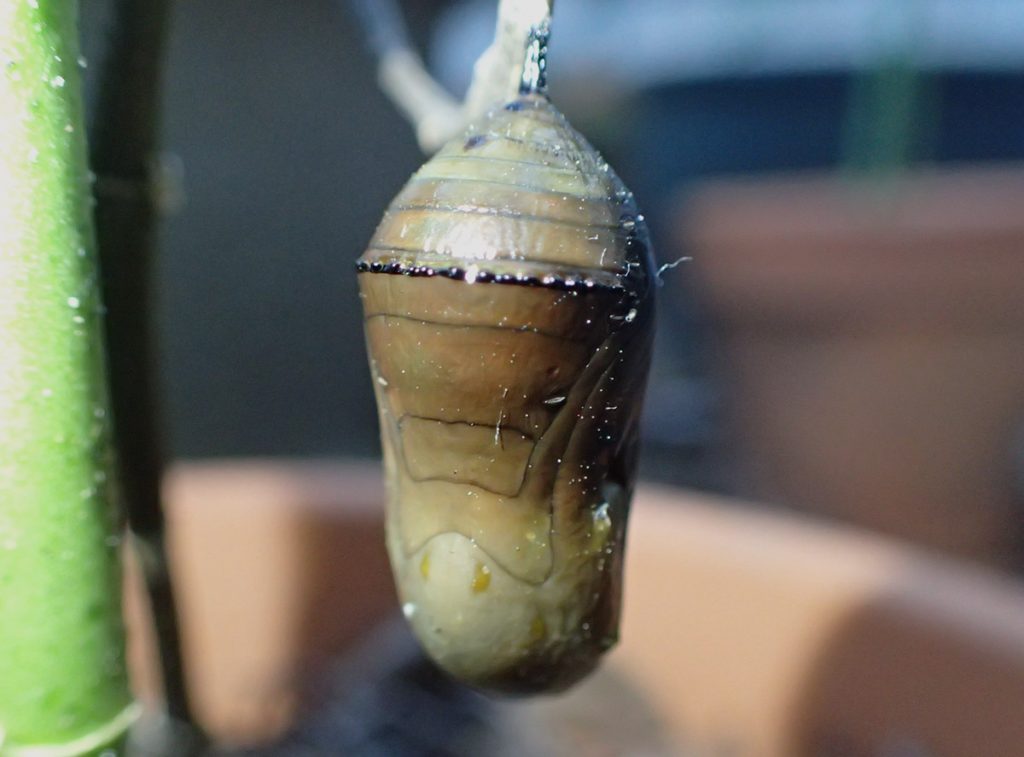
This is what a chrysalis with OE looks like. From what I’ve seen and heard, a few people in town had monarchs at around the same time. Aside from OE, winter caterpillars face a few challenges. Even an unseasonably warm January might dip below freezing for even just one night, killing leaf growth before the cats are done eating and getting ready to metamorphose. And the caterpillars themselves aren’t adapted for colder temperatures. Their chrysalides don’t overwinter like swallowtails and other butterflies. There is a permanent monarch population further south in this state, but maybe conditions aren’t quite right for one to exist in north Florida.
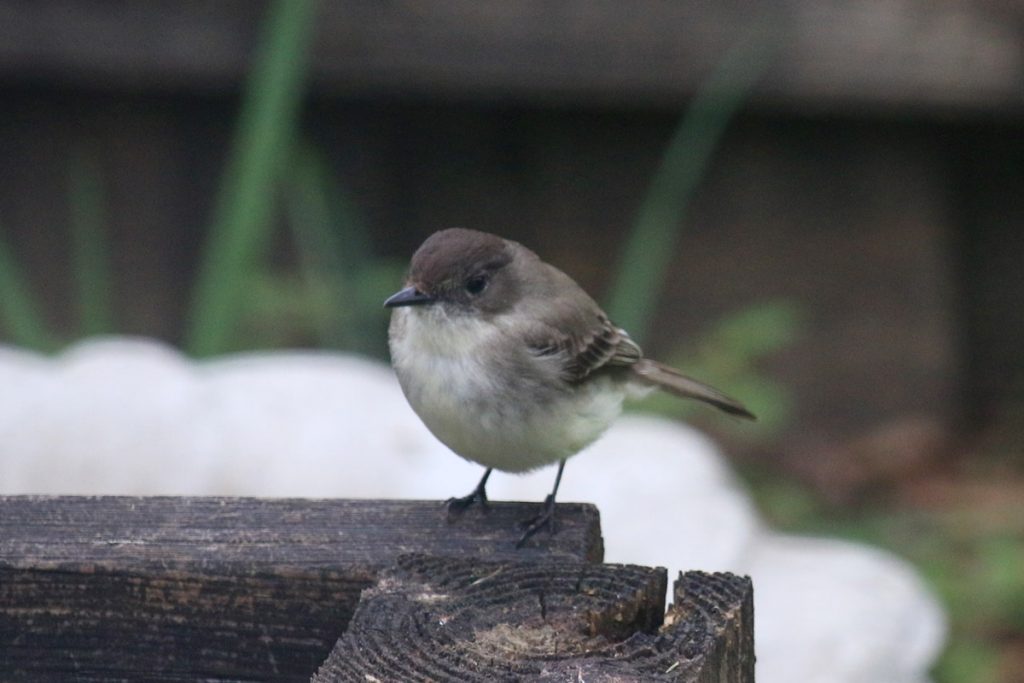
Migratory Birds and Other Animals in Our Yard
As for the other animals in our yard, everything was about normal for this time of year. I am constantly peeking out the window at the bird feeder, seeing what winter visitors we might have attracted. Above is an eastern phoebe (Sayornis phoebe), a common sight in our area this time of year. Its head and back aren’t as dark as most of the ones I’ve seen, so I didn’t recognize it at first.
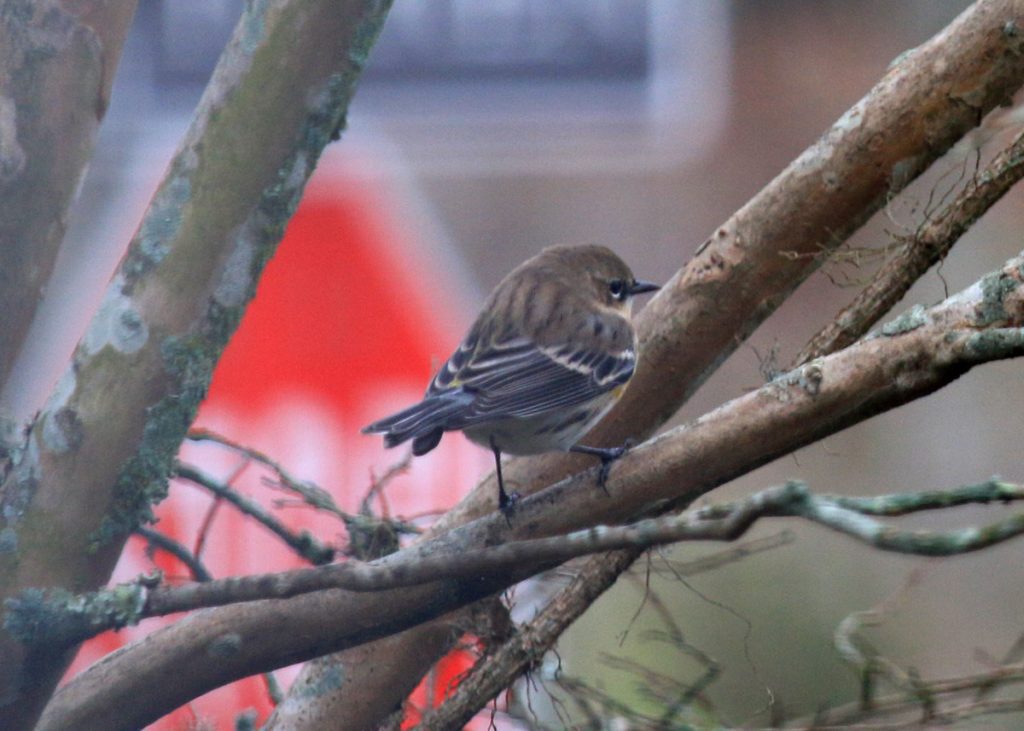
Another common winter migratory bird is the yellow-rumped warbler.
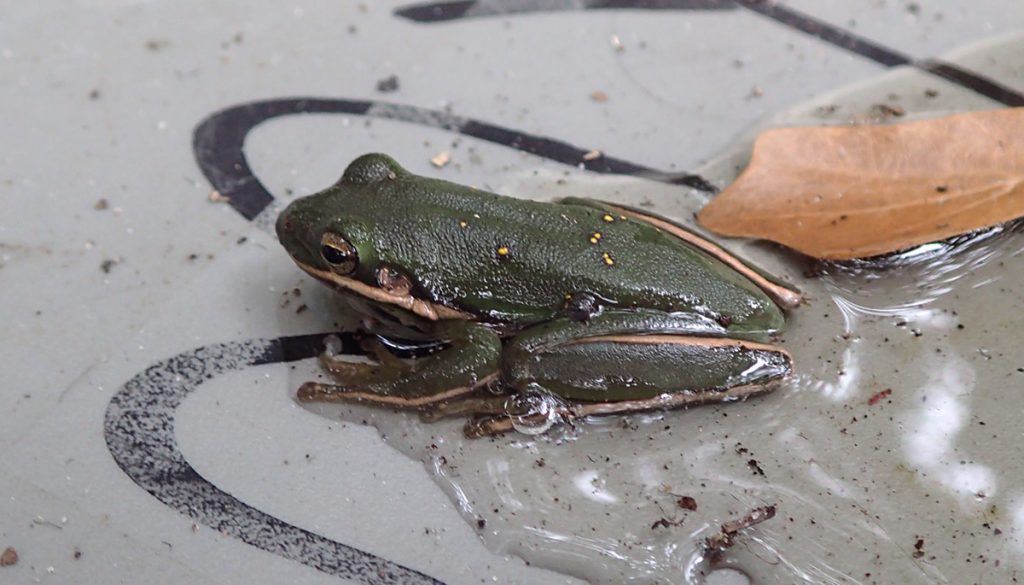
This guy was hiding out between two bins in our shed. Must have been a warm spot during a somewhat cooler time.
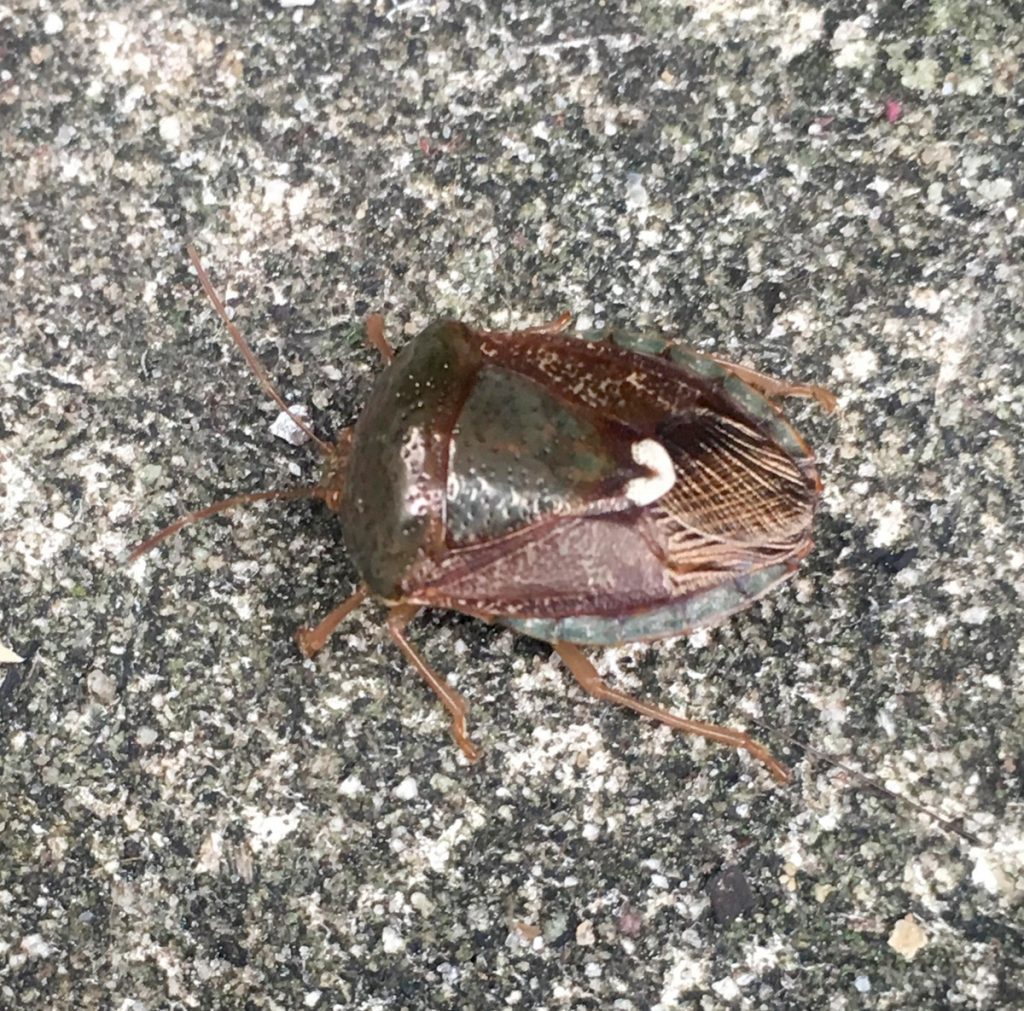
And here’s an insect other than monarchs and aphids. Using iNaturalist, I’ve ID’d a few insects like this, with no common name, and not much information available about them. One more species to add to our backyard diversity.
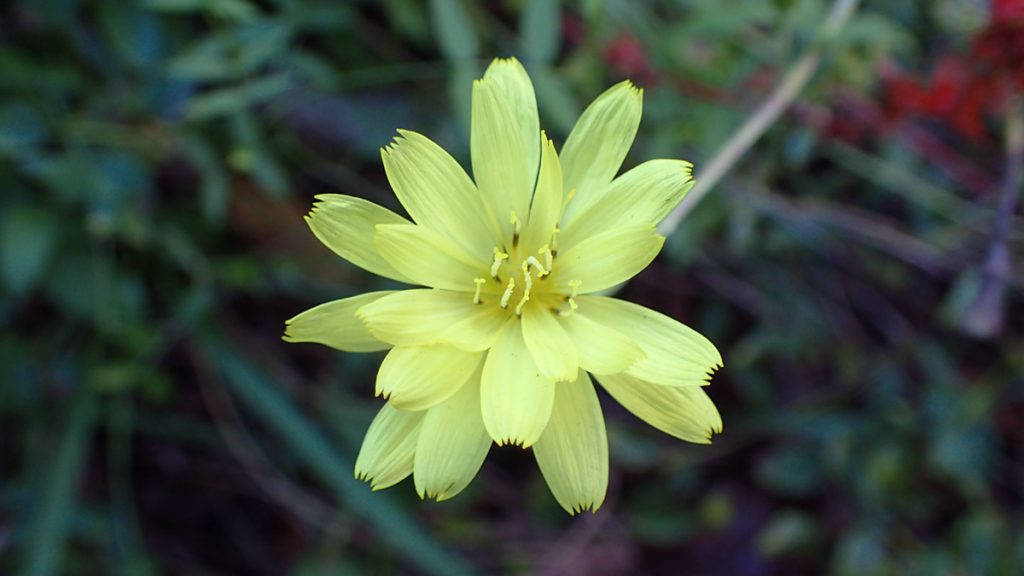
Identifying My Dandelion Tribe Weeds By Their Leaves (and not their flowers)
The photo and the header above don’t seem to match, but that flower is a good springboard to discussing our many dandelion and related species. This is Carolina desert chicory. Or is it a false dandelion? Their flowers are nearly identical. The way to tell them apart is their leaves. False dandelions have leaves like, well, a dandelion. They lie flat on the ground, radiating out from the stem. Chicory has more grass like leaves.
Many of the dandelion and related species aren’t blooming right now, but their leaves are everywhere.
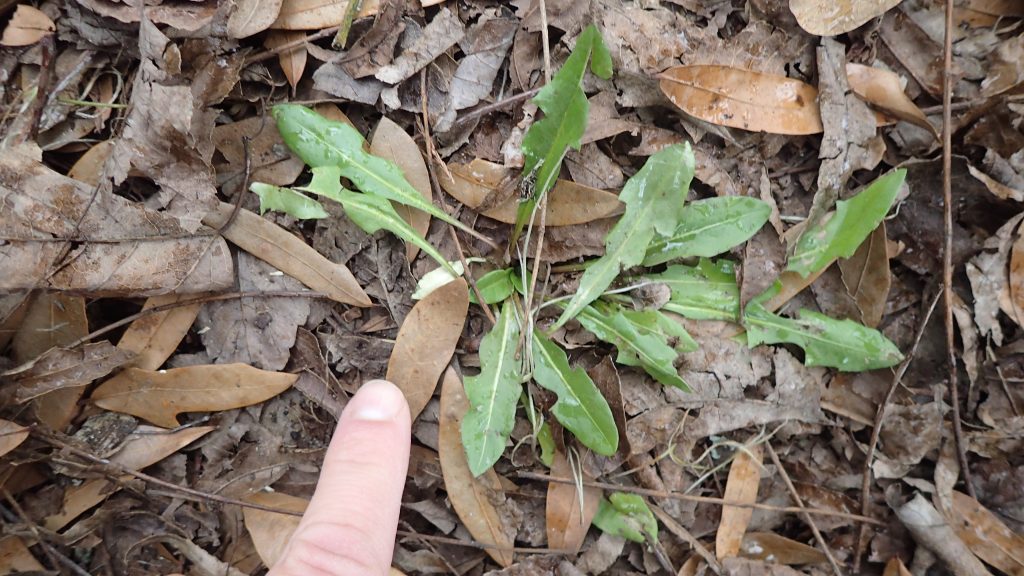
Lobed leaves, with kind of a spear tip. This is a common dandelion. It’ll bloom into a small, golden yellow flower. This is a nonnative plant of European origin.
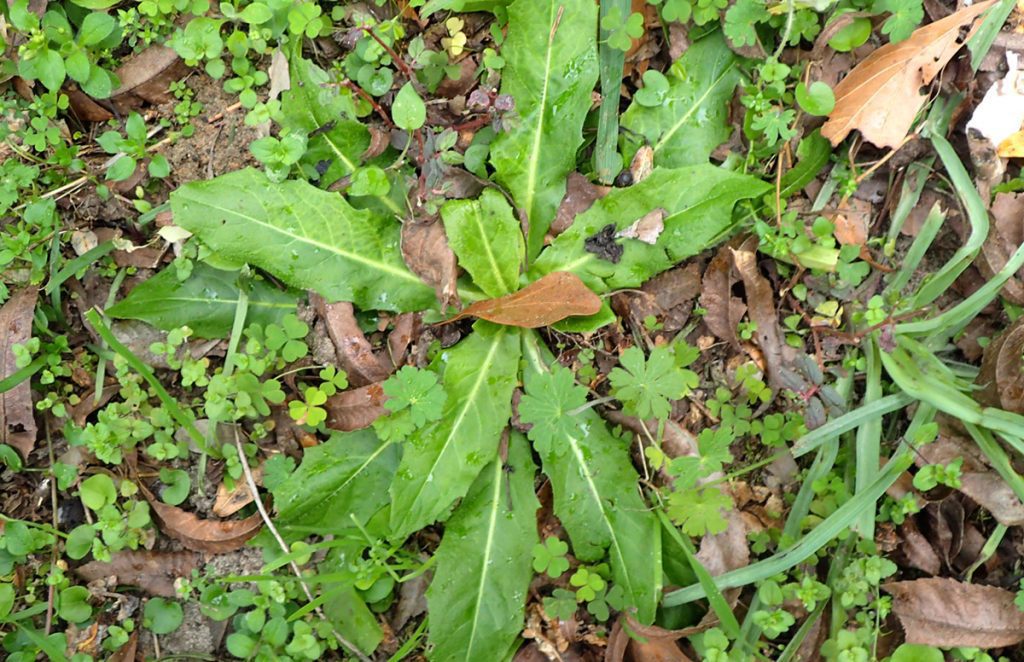
Another introduced species from Europe, north Africa, and the Middle East. iNaturalist doesn’t flag this as introduced, and I’ve noticed many plant species that are considered “naturalized” are treated as native, even in the USDA invasive plant lists. It’s good to click on a species’ name on iNaturalist, and read the description. The text will usually list its origin. Doing this, though, I’ve read that other species are native to, say, all temperate regions across the world (its information comes from Wikipedia, typically). That’s kind of a red flag to look into it further.
So why do we care if it’s native or not? The nonnative members of the dandelion tribe have flowers that attract pollinators. And their leaves are edible (the cat’s ear has a little bite, like arugula). But they can take up space where you’re trying to encourage native vegetation to take over. And some can become invasive and take over a space. But others may have a value to you. Below is a nonnative plant that I keep for ecological reasons:
IDing Other Weeds Before They Flower- the Nonnatives
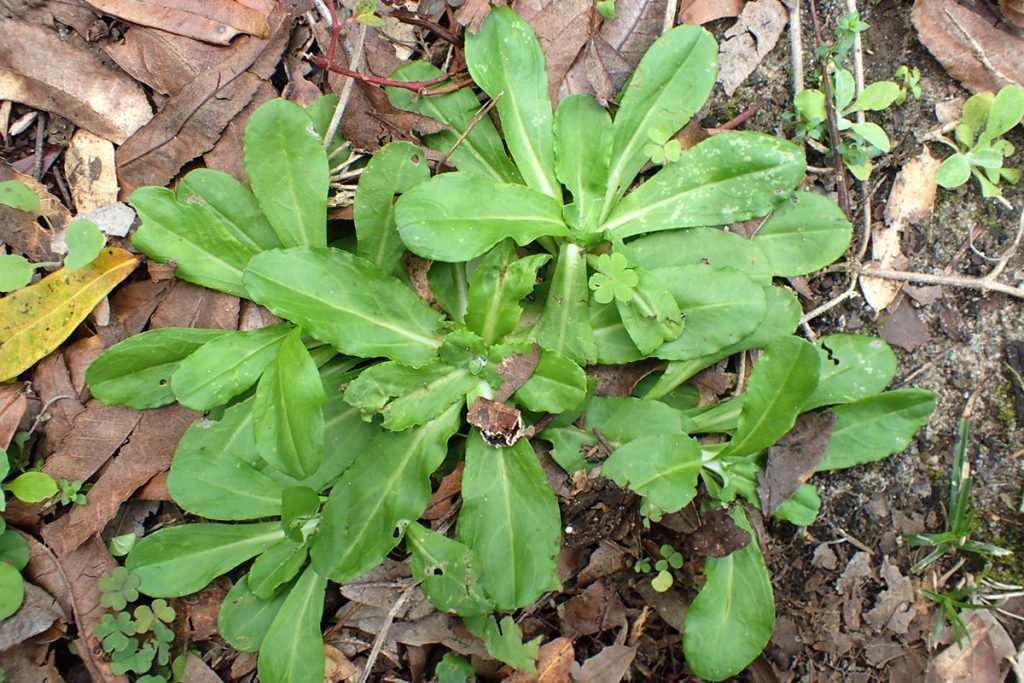
I originally thought this was a type of dandelion. When it flowers, though, the difference is pronounced. Despite its name, this is not a native. It is, however, larval food for painted lady butterflies. And you know me- I like seeing different caterpillars in the yard.
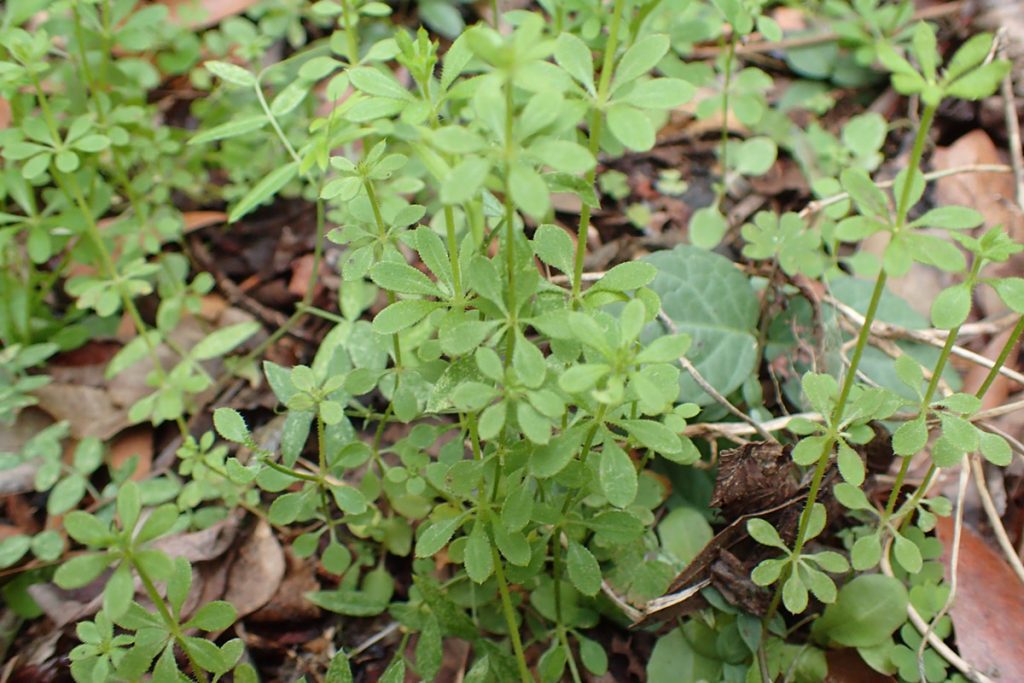
Another plant listed as a native on iNaturalist, until you click the “about” tab on its species page. Catchweed bedstraw’s leaves are kind of sticky, but the plant i easy to pull out.
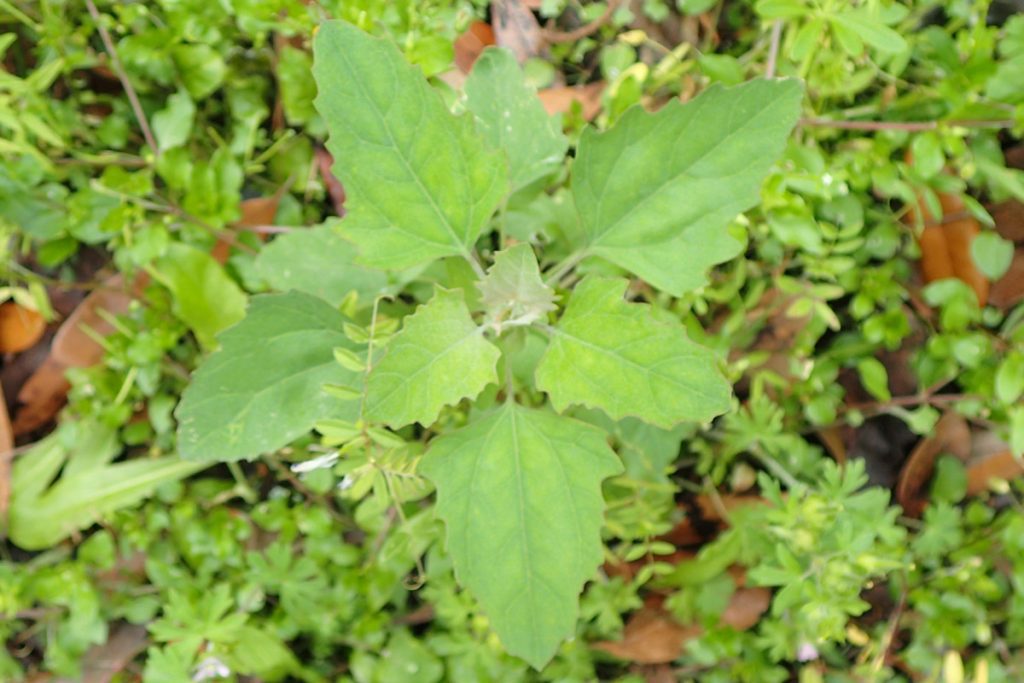
Here’s another plant that’s “native” to just about everywhere. It is cultivated as a food crop in parts of the world, so maybe I should give it a try?
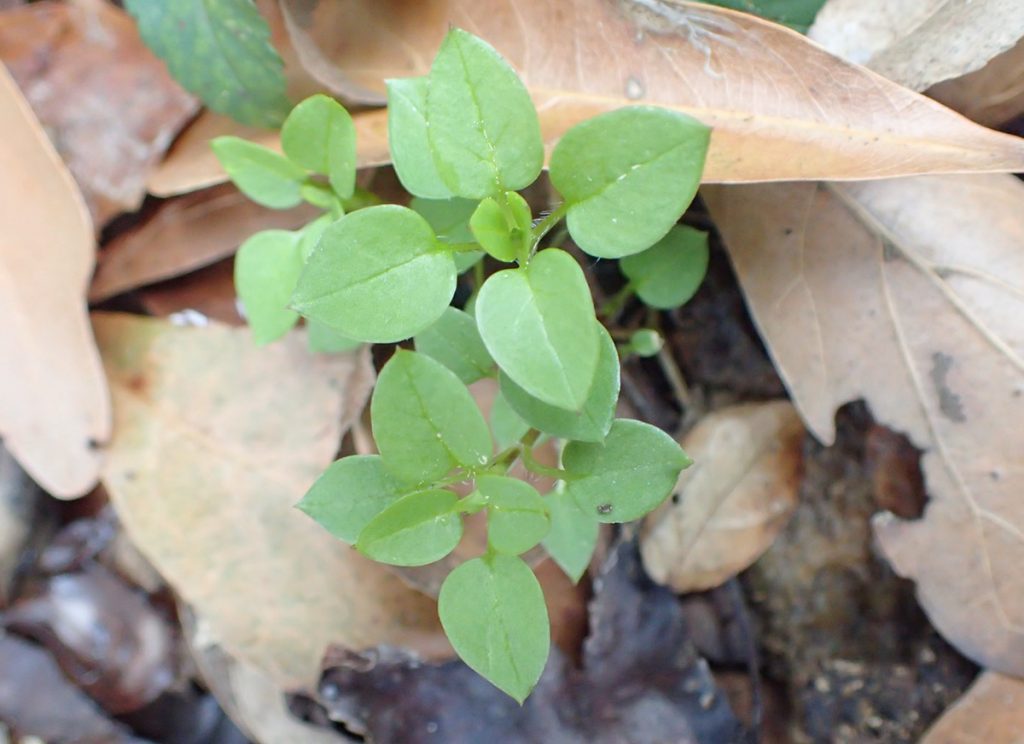
Another nonnative. Many of our exotic invasive plants like this kind of habitat I’ve created by pulling up pavers. As humans build and expand our footprint, we create disturbed spaces. This creates vectors for these kinds of weeds, and fire ants as well. I have planted some native groundcover plants, and there are native plants that have come in as well. That’s part of why I learn about these plants. Over time, I hope to see a yard full of diverse native plants covering the ground.
IDing Other Weeds Before They Flower- the Natives
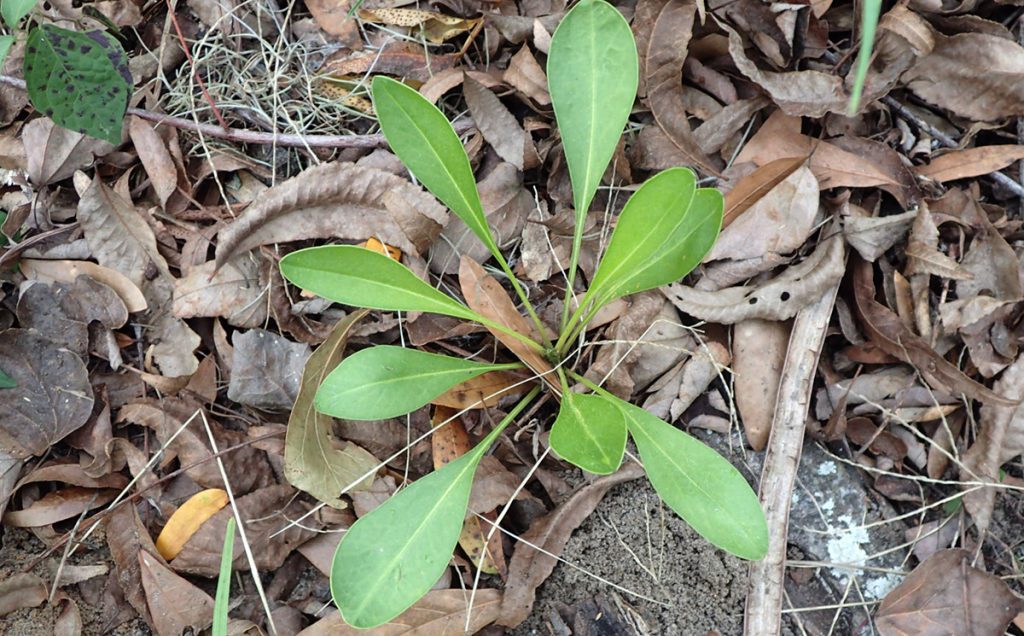
I’ve been seeing this around for a while, and once I got the ID, I realized these grew from seeds I’d spread around the yard. These are lance-leafed coreopsis, the seeds of which I obtained at the Red Hills Fire Festival two years ago, from the Florida Native Plant Society. I had seen one or two coreopsis flowers in bloom last year, but I guess I never paid attention to their leaves.
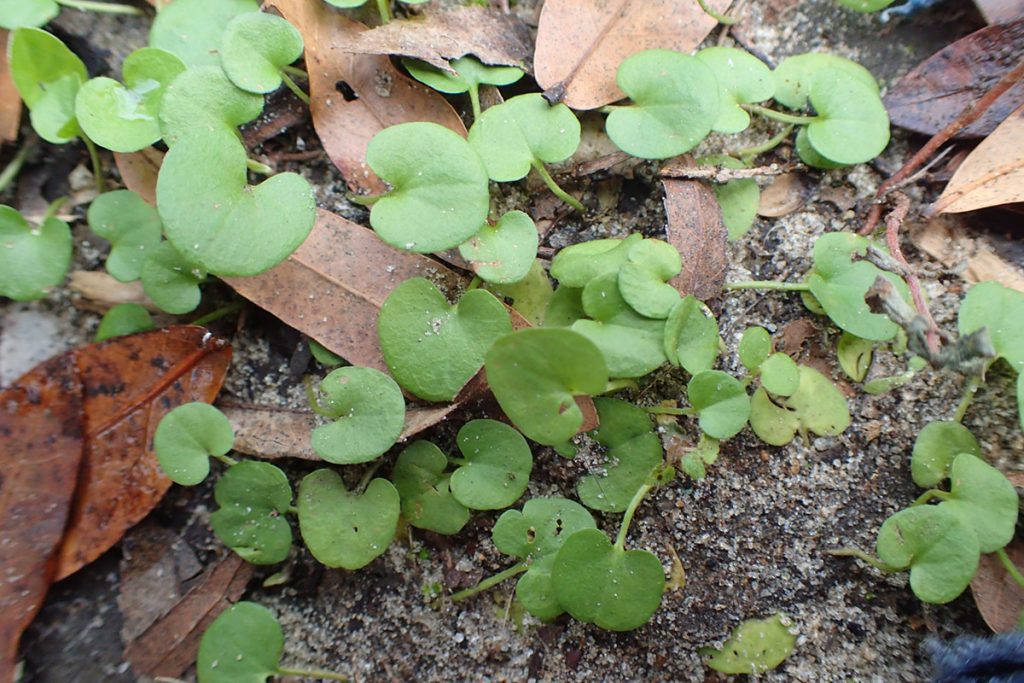
This herbaceous plant is covering sections of the yard, and it’s native to the American southeast. Finally, a native groundcover plant that volunteered in the yard.
What Do We Have Blooming in January?
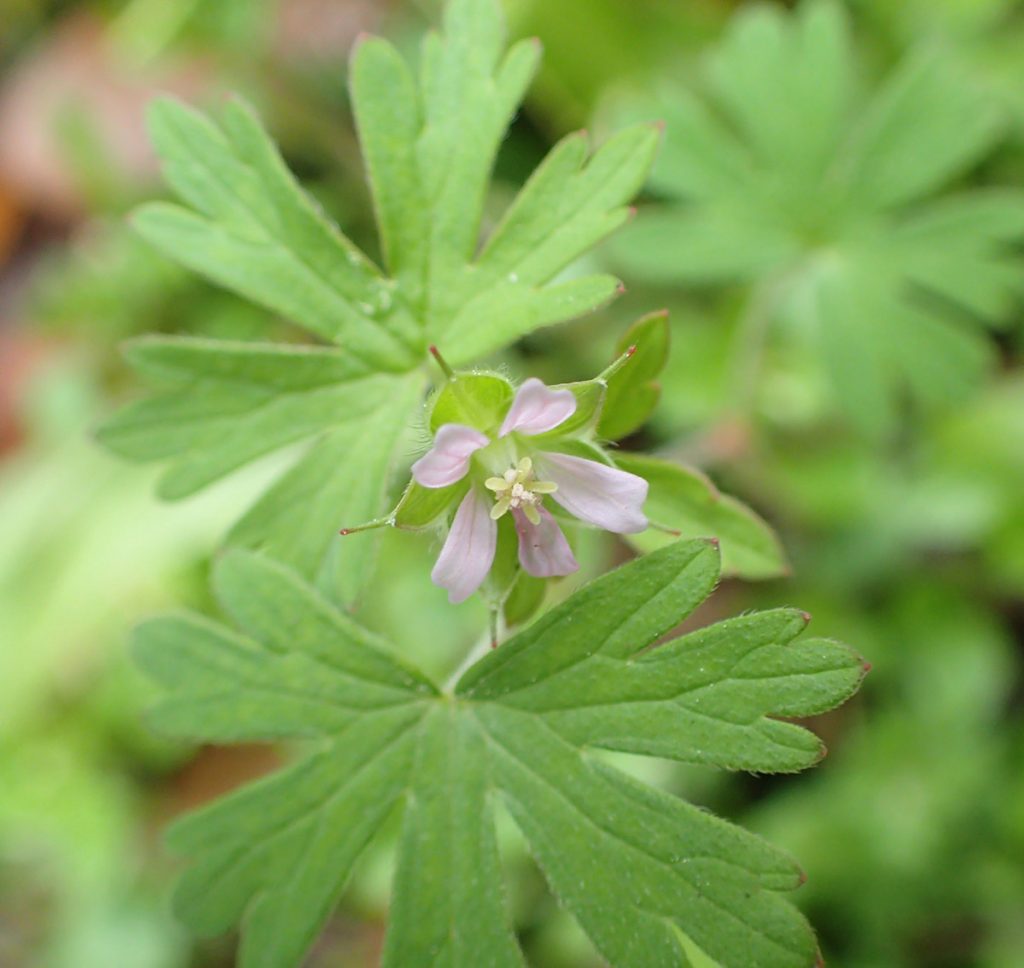
And another native! Here it is blooming a couple of months earlier than usual. This is a common weed around town, like many of the others in this post. It’s not really a great ratio of natives to nonnatives, but, again, that’s why I take the time to find out what’s what.
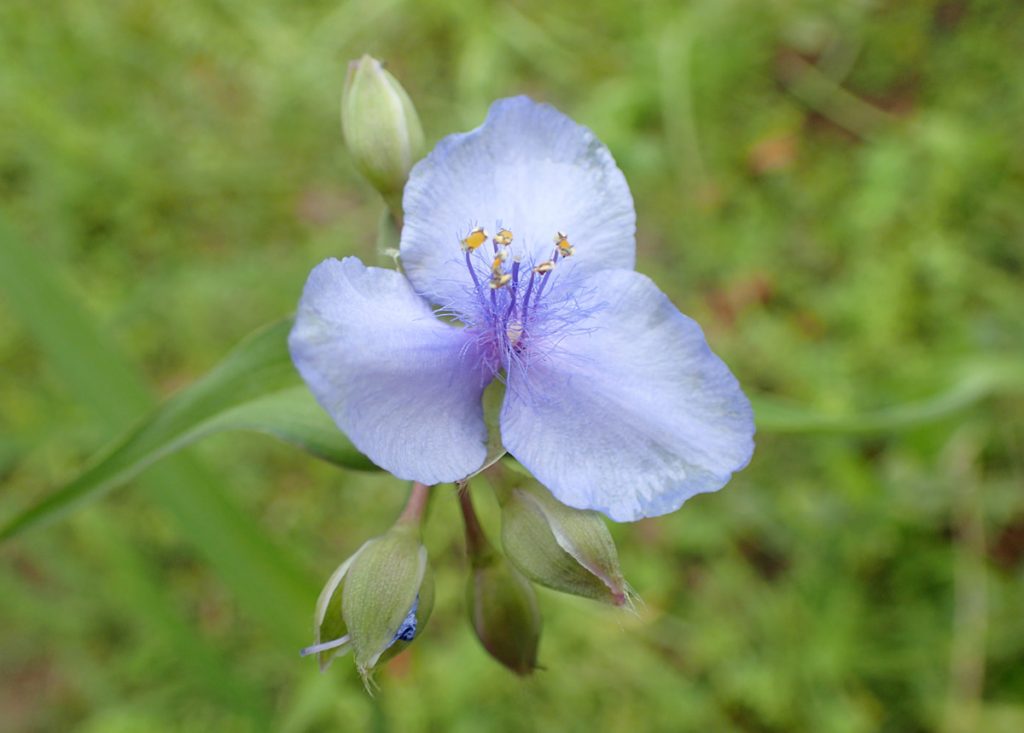
And yet another native. Like the cranesbill, wildflower.org has this starting to bloom in March. However, this spiderwort can bloom year round if it doesn’t get too cold. This one is popular with bees, and it’s all over my yard.
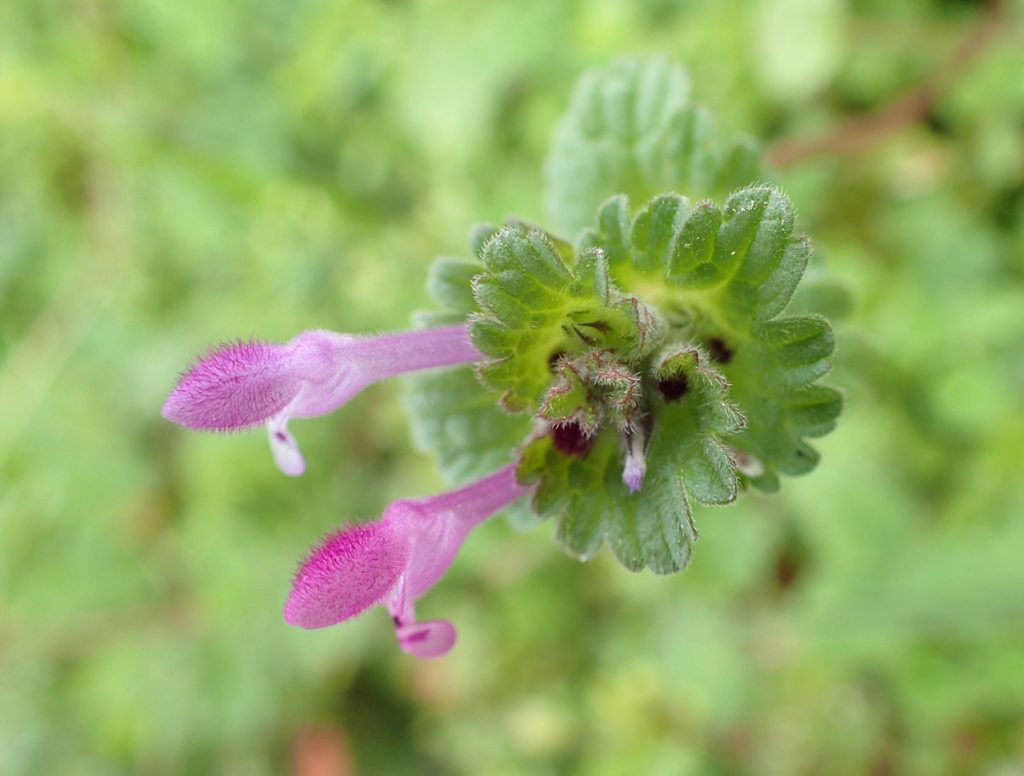
It’s pretty, and it’s in the mint family. But it’s not native. So I pull it.
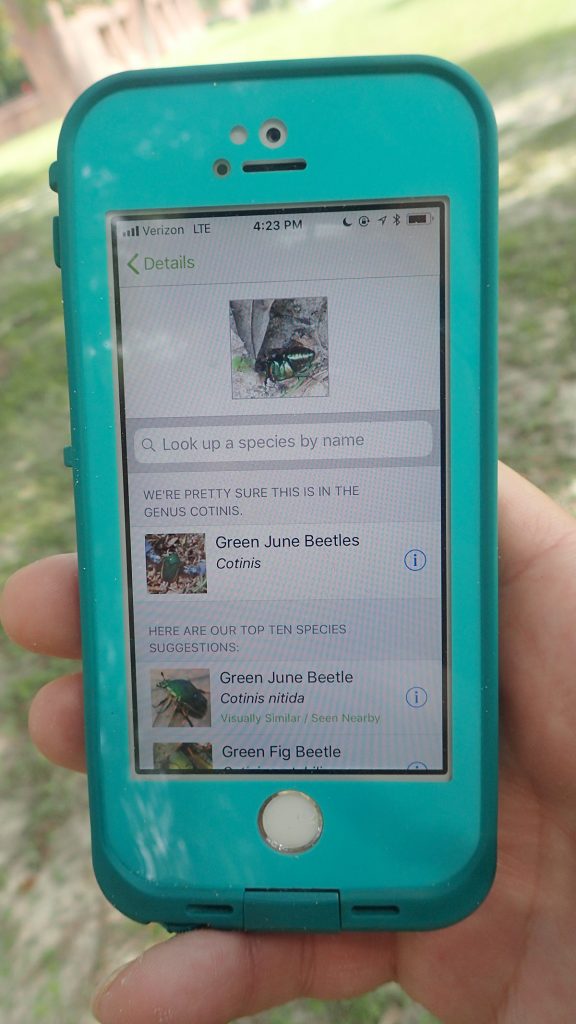
Apps and Citizen Science mentioned in the Backyard Blog
iNaturalist
Identify plants, animals, lichens, and fungi in your yard. Other users correct your identifications if you’re wrong, and even if they don’t, it can be a good springboard to further research.
Seek by iNaturalist
Instant identification, and it doesn’t record your location. This is a good option for kids with phones.
Monarch Larva Monitoring Project
Enter information about monarch caterpillars in your yard, and help researchers get a sense of the health of the monarch population that year, and how and when they’re migrating.
Great Sunflower Project
Record the number of pollinators visiting your flowers, and help researchers map pollinator activity across the country.
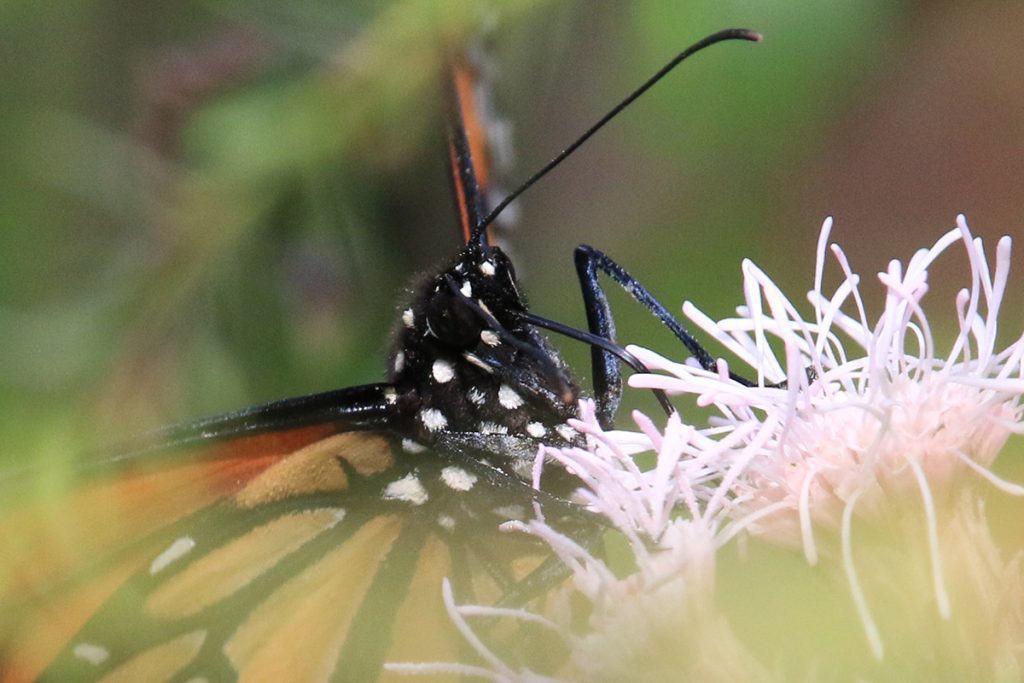
Dig Deeper into Backyard Ecology
What can we do to invite butterflies, birds, and other wildlife into our yards? And what about the flora and fauna that makes its way into our yards; the weeds, insects, and other critters that create the home ecosystem? WFSU Ecology Blog takes a closer look.

